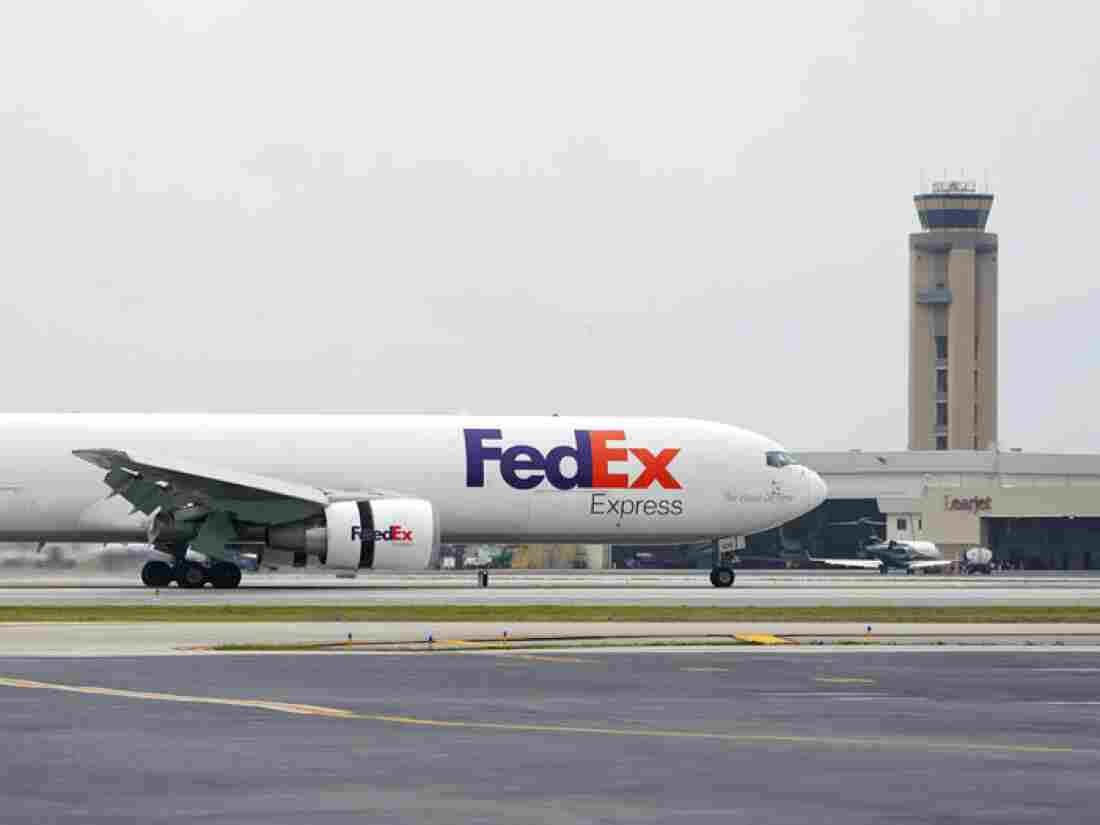National
Safety investigators want more technology to prevent close calls on runways
Safety investigators want more technology to prevent close calls on runways
Audio will be available later today.
A FedEx Boeing 767 cargo plane similar to this one, seen here in Fort Lauderdale, Fla., almost collided with a Southwest jet at the international airport in Austin, Texas, last year. Safety investigators say an air traffic controller’s mistake was to blame and that critical safety technology might have prevented the incident.
Wilfredo Lee/AP
hide caption
toggle caption
Wilfredo Lee/AP
WASHINGTON — An air traffic controller’s mistake led to a near collision between two jets on a foggy runway in Austin, Texas, last year, the National Transportation Safety Board said Thursday.
Investigators also called for critical safety technology and additional training, which they say might have prevented the incident, as federal regulators grapple with a growing number of close calls on runways across the country including one last week at Ronald Reagan Washington National Airport.
There was dense fog and poor visibility at Austin-Bergstrom International Airport on the morning of Feb. 4, 2023, when an air traffic controller cleared two planes to use the runway at the same time. A FedEx cargo plane had permission to land, while a Southwest Airlines jet carrying 128 passengers and crew was also cleared for takeoff.
Senate Commerce Committee Considers Nomination of Michael Whitaker as FAA Administrator
Investigators say the FedEx plane aborted its landing at the last moment when the first officer saw the left position light and silhouette of the Southwest plane on the runway, soaring back into the air while the Southwest jet proceeded with its takeoff.
At their closest, investigators say the two planes were 150 to 170 feet apart.
“This incident could have been catastrophic if not for the heroic actions of the FedEx crew,” NTSB Chair Jennifer Homendy said during the board meeting.
Investigators say the air traffic controller in Austin could not see the exact location of the Southwest jet on the taxiway and incorrectly assumed that the plane was ready to take off when he told the pilots they were clear to enter the runway.
“We had two aircraft within 200 feet of each other, and that should not happen,” board member Michael Graham said.
“The system failed in this event,” Graham said. “If it was not for FedEx crew’s last-minute go-around, we might be having a different discussion today.”
The first officer on the FedEx plane, Robert Bradeen Jr., was in the audience Thursday and received an ovation.
The NTSB previously told a Senate committee that a shortage of air traffic controllers is leading to fatigue and distraction. But investigators said Thursday that fatigue was not a factor in the Austin incident.
However, investigators did fault the Federal Aviation Administration for not requiring the Austin airport to have technology in place to detect the precise location of planes on the ground.
The NTSB said such technology might have prevented the incident. The controller told investigators that he couldn’t see the plane from the tower and was relying on the sound from its engines to know when it was preparing for takeoff.
The FAA announced recently that it would begin installing a surface detection system at some airports, including Austin, by the end of 2025. At least 35 major U.S. airports already have some form of technology designed to prevent runway incursions, according to the FAA.
But the NTSB says the deployment isn’t happening fast enough. Investigators are recommending that all major airports be equipped with a system that tracks the movement of aircraft, determines their proximity to each other, and provides air traffic controllers with visual and aural cues of their surface movements.
The U.S. has seen a growing number of close calls on runways across the country in recent years. There were 23 of the most serious runway incursions in 2023, according to FAA data, compared to 16 in 2022.
Homendy said there have been at least seven such incidents so far in 2024 and that the NTSB is currently investigating several more.
“The somber truth is, it only takes one. One missed warning, one incorrect response, even one missed opportunity to install lifesaving technology can lead to tragedy,” Homendy said. “We are trending in the wrong direction.”
